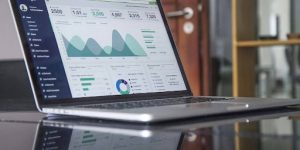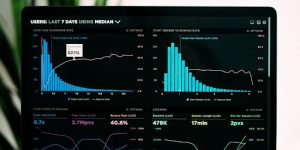
Facebook ads are a significant factor in getting your business noticed online. With so many people on the platform, it’s a great place to advertise. But it can get crowded out there. To do well, you need to be on top of your game, checking your ads, making them better, and seeing what works. If you’re not using the right tools to look at your Facebook ad performance, you might miss out on chances to reach more people or get more customers. Plus, you could end up spending more money than you need to. This article will look at some of the best Facebook advertising reporting software tools out there to help you ditch those confusing spreadsheets and find what fits your business best.
Key Takeaways
- Facebook advertising reporting software helps you understand how well your ads are performing, so you can make them better and get more results.
- Key metrics to watch include Click-Through Rate (CTR), Return on Ad Spend (ROAS), total spend, and conversions.
- When choosing a tool, think about how easy it is to connect your accounts, if it uses AI to help, how much you can change the reports, how detailed the data is, and the cost.
- Many tools offer custom dashboards, white-label options for agencies, and automated reporting to save you time.
- The best tool for you will depend on your specific business needs, budget, and how you like to see your data.
What Is Facebook Advertising Reporting Software—and Why It Matters

Facebook advertising reporting software tools are platforms designed to help businesses track, analyze, and understand the performance of their ad campaigns on Facebook and Instagram. Think of them as your data detectives, sifting through mountains of information to tell you what’s working and what’s not. Without these tools, you’re essentially flying blind, making decisions based on guesswork rather than solid data. This can lead to wasted ad spend and missed opportunities to connect with potential customers.
Why It Matters
Running Facebook ads can feel like a complex puzzle. You’ve got budgets to manage, audiences to target, and creative content to develop. Effective reporting software helps bring clarity to this process. It consolidates data from your campaigns, presenting it in a way that’s easy to grasp. This allows you to quickly see which ads are driving results, which ones are falling flat, and where your money is going. Understanding these insights is key to optimizing your campaigns for better performance and a higher return on investment.
Key Benefits of Using Facebook Ads Reporting Software
- Unified Data View: Consolidates data from various ad sets and campaigns into a single dashboard, often alongside data from other marketing channels.
- Actionable Insights: Transforms raw data into understandable trends and patterns, highlighting areas for improvement.
- Time Savings: Automates data collection and report generation, freeing up valuable time for strategic thinking.
- Improved Decision-Making: Provides the data needed to make informed choices about ad spend, targeting, and creativity.
- Performance Tracking: Monitors key metrics like click-through rates (CTR), return on ad spend (ROAS), and conversion rates.
Relying solely on Facebook’s native reporting can be limiting. Third-party tools often provide more advanced customization, deeper analysis, and easier integration with other marketing platforms, giving you a more complete picture of your advertising efforts. This allows for more agile adjustments and ultimately, more successful campaigns. It’s about making your ad budget work smarter, not just harder.
Choosing the right tools can significantly impact your ability to manage and scale your advertising effectively. For instance, understanding how your ads perform across different demographics is made much simpler with the right Facebook ads management tools.
Key Metrics to Track in Facebook Ads Reporting (CTR, ROAS, Spend, Conversions)

When you’re running ads on Facebook, it’s easy to get lost in all the numbers. But knowing what to look at is half the battle. You need to focus on the metrics that tell you if your ads are working and if you’re making money.
Click-Through Rate (CTR)
This is basically how often people click on your ad after seeing it. A higher CTR means your ad is grabbing attention and is relevant to the people you’re showing it to. Think of it as a first impression score. If your CTR is low, your ad might not be interesting enough, or you might be showing it to the wrong people. A good CTR can vary by industry, but generally, anything above 0.9% is a decent starting point. We’re aiming for ads that people want to interact with.
Return on Ad Spend (ROAS)
This is a big one for anyone trying to make money with ads. ROAS tells you how much revenue you’re getting back for every dollar you spend on advertising. For example, a ROAS of 5:1 means you’re making $5 for every $1 you spend. This metric directly shows the profitability of your campaigns. If your ROAS is low, you’re likely spending too much or not generating enough sales from your ads. It’s a clear indicator of whether your ad spend is paying off.
Spend
This one is straightforward: it’s the total amount of money you’ve spent on your Facebook ads. Keeping a close eye on your spending is important for budget management. You need to know how much you’re investing to figure out your ROAS and overall profitability. It’s not just about spending, but spending wisely to get the best results.
Conversions
Conversions are the actions you want people to take after seeing your ad. This could be anything from making a purchase, signing up for a newsletter, downloading an app, or filling out a contact form. Tracking conversions tells you if your ads are driving the results you want for your business. It’s the ultimate measure of success for most ad campaigns. Focusing on the right conversions helps you understand the real impact of your advertising efforts. You can find more details on essential Facebook Ads metrics to help you analyze your campaigns.
It’s important to remember that no single metric tells the whole story. You need to look at these numbers together to get a clear picture of how your ads are performing and where you can make improvements. For instance, a high CTR is great, but if it doesn’t lead to conversions, it’s not really helping your business goals.
Criteria for Choosing the Best Facebook Ads Reporting Software
When you’re looking for software to report on your Facebook ads, it’s not just about picking the first one you see. You need to think about what actually matters for your business and your team. The goal is to find a tool that makes your ad data clear and useful, not just another place to store numbers.
Data Visualization
How does the tool show you the information? Does it use charts and graphs that make sense at a quick glance? Good visuals help you spot trends or problems without getting lost in spreadsheets. Think about how easy it is to see your key numbers, like cost per conversion or return on ad spend, without a struggle. You want to be able to understand campaign performance quickly.
Customization Options
Can you tailor the reports to show exactly what you need? Maybe you care more about clicks, or perhaps it’s all about the leads generated. The ability to pick your metrics, set specific date ranges, and even add your company logo makes the reports feel like your own. This level of control means you’re not looking at data that doesn’t help you.
Integrations
Your Facebook ads don’t exist in a vacuum. You probably use other tools for email marketing, website analytics, or customer relationship management. The reporting software should connect with these other systems. This way, you can see how your Facebook ads fit into the bigger picture of your marketing efforts. It saves a lot of time not having to manually move data between different platforms. Finding a tool that connects well can streamline your workflow.
Metrics and Granularity
What specific numbers does the tool track? Does it go deep enough? You’ll want to see things like impressions, click-through rates (CTR), conversion rates, and overall spend. But it’s also important to see this data broken down by ad, ad set, or campaign. This detailed view helps you understand what’s working and what’s not on a granular level, allowing for quicker adjustments. It’s about getting the right data to make smart decisions.
Automation and Collaboration
Manually pulling reports takes time. Look for tools that can automatically generate and send reports on a schedule. This means you always have the latest data without lifting a finger. If you work with a team, features that allow easy sharing and collaboration are a big plus. Everyone should be on the same page regarding campaign performance. This helps keep projects moving forward smoothly.
Cost and Support
Of course, you need to consider the price. Does the cost fit your budget? Are there different pricing tiers based on usage or features? It’s also wise to check out the customer support. What happens if you run into a problem? Do they have helpful articles, FAQs, or a way to contact them directly? Good support can save you a lot of headaches down the line. It’s worth checking out the features of free plans to see if they meet your initial needs.
Choosing the right tool means finding something that fits your budget, your team’s workflow, and your specific advertising goals. It’s about making data work for you, not the other way around.
Whatagraph: AI-Powered Custom Reports for Facebook Ads
Whatagraph is a tool that helps you put together custom reports for your Facebook ads. It uses AI to help with this, which can make things faster and give you more detailed information. You can pull data from Facebook Ads and other places to see how everything is doing in one spot. This means you don’t have to jump between different programs to get the full picture of your ad performance.
Whatagraph focuses on making reporting easier and more visual. They aim to turn your raw data into insights that you can actually use to make better decisions about your ad spending. It’s good for seeing things like click-through rates, return on ad spend, how much you’re spending, and how many conversions you’re getting.
Here’s a look at some of the things Whatagraph can do:
- Customizable Dashboards: You can build dashboards that show exactly the metrics you care about most. This way, you’re not sifting through data that isn’t relevant to your goals.
- AI-Powered Insights: The AI features can help identify trends or patterns in your data that you might miss otherwise. This can lead to smarter adjustments to your campaigns.
- Data Consolidation: It brings data from various sources together, so you have a single place to view all your marketing performance. This makes it easier to get a complete view of how your Facebook ads are performing about other efforts.
- Report Sharing: You can share these reports with your team or clients, making it simple to keep everyone informed about campaign progress.
The goal is to simplify the complex world of ad reporting. By automating data collection and providing clear visualizations, tools like Whatagraph aim to save marketers time and help them make more informed decisions about their ad campaigns. This allows for quicker adjustments and better overall campaign results.
Whatagraph is a good option if you’re looking for a way to create tailored reports without a lot of manual work. It helps you see your Facebook ad performance clearly and use that information to improve your campaigns. You can check out Whatagraph’s Facebook Ads reporting tool to see if it fits your needs.
TapClicks: Comprehensive Dashboards with White‑Label Reporting
TapClicks is a platform that helps marketing teams manage and report on their campaigns. It’s known for its ability to pull data from many different places, like social media, Google Ads, and other marketing tools, into one spot. This makes it easier to see how everything is performing without jumping between different accounts.
One of the big draws for agencies is the white-label reporting. This means you can put your agency’s own logo and branding on the reports you send to clients. It makes your reports look professional and keeps your brand front and center. You can also create custom dashboards that show exactly the information your clients care about. This means no more sifting through data that isn’t relevant to them.
TapClicks also focuses on making the reporting process smoother. It helps automate the collection of data, so you spend less time gathering numbers and more time figuring out what they mean. They also have features that help you manage your marketing operations more efficiently.
Key features often include:
- Connecting to over 200 data sources.
- Customizable dashboards with drag-and-drop functionality.
- White-label options for client-facing reports.
- Automated data collection and report scheduling.
- Client portals for direct data access.
The ability to customize reports and dashboards is a major plus. It allows agencies to tailor the data presentation to the specific needs and preferences of each client, fostering better understanding and trust. This level of personalization is what sets good reporting apart from great reporting.
When looking at reporting tools, TapClicks stands out for its focus on operational efficiency and client-facing customization, particularly through its white-label reporting capabilities.
Supermetrics: Automate Data Extraction to Sheets, BI Tools, and Warehouses

Supermetrics is a solid choice if you need to get your Facebook Ads data into places like Google Sheets, various business intelligence (BI) tools, or even data warehouses. It shines when you want to automate the process of pulling this information out of Facebook and putting it where you can analyze it more deeply or combine it with other data sources.
Key Features and Benefits
- Wide Range of Connectors: Supermetrics connects to a lot of different marketing platforms, not just Facebook Ads. This means you can pull data from Google Ads, LinkedIn, Instagram, and many others all into one place. This makes it easier to get a full picture of your marketing performance.
- Automated Data Refresh: You can set up Supermetrics to automatically update your data on a schedule. This is a big time-saver because you don’t have to manually download reports every day or week. Your spreadsheets or dashboards will always have the latest numbers.
- Flexibility in Destinations: Whether you prefer working in Google Sheets, Excel, or using more advanced tools like Tableau, Power BI, or even data warehouses like BigQuery, Supermetrics has connectors for them. This flexibility is great for different team needs and existing workflows.
- Reporting Templates: For those who want a head start, Supermetrics offers pre-built reporting templates. These can help you quickly set up reports to track your Facebook Ads performance without starting from scratch. You can find templates to easily track Facebook performance.
How it Works
Supermetrics act as a bridge. You connect your Facebook Ads account to Supermetrics, and then you choose where you want the data to go. For example, you could set it up to automatically populate a Google Sheet with your campaign spend, clicks, and conversions every morning. Or, you could send that data directly into a BI tool for more complex analysis and visualization.
The main advantage here is cutting down on manual work. Instead of spending hours downloading CSVs and copy-pasting data, Supermetrics handles the heavy lifting, freeing up your time for actual strategy and analysis.
Who is it for?
This tool is particularly useful for:
- Marketing teams that need to regularly report on Facebook Ads performance.
- Agencies managing multiple client accounts and needing to consolidate data.
- Anyone who wants to integrate Facebook Ads data into a larger data analysis system.
- Users who are comfortable with spreadsheets or BI tools but want to automate the data collection part.
DashThis: Streamlined Visual Dashboards for Agencies and Teams
DashThis is a tool that really simplifies making marketing reports. If you’re an agency or part of a team that needs to show how campaigns are doing, this could be a good fit. It’s designed to automate the process of pulling data and putting it into reports that look good. This means less time spent on manual work and more time for actual strategy.
Automated Data Collection and Report Generation
One of the main draws of DashThis is its ability to automate data collection. It connects to over 30 marketing platforms, including big names like Google Ads, Facebook, and Google Analytics. This means you can get all your campaign data in one place without a lot of hassle. The tool then uses this data to generate reports automatically. This saves a lot of time, which is always a plus when you’re juggling multiple clients or projects.
Customizable Dashboards and Branding
DashThis lets you customize your dashboards. This is great for agencies because you can brand the reports with your logo and colors. It makes the reports look more professional when you send them to clients. You can also import your data using CSV files, and the tool will keep that data updated automatically. They also have pre-made report templates for different marketing areas, which can speed things up even more.
Integrations
DashThis works with a lot of different marketing tools. Some of the key integrations include:
- Facebook Ads
- Google Analytics (including GA4)
- Google Ads
- Google My Business
- Google Search Console
- Ahrefs
- CallRail
This wide range of connections means you can likely pull in data from all the platforms you’re currently using.
AI Insights Beta
Recently, DashThis has been rolling out an AI Insights Beta. This feature is designed to give you narrative analysis directly from your dashboards. The idea is that the AI can help you understand what the data means and guide your decision-making. It’s still in beta, so they’re looking for feedback to make it better. This kind of AI report template could really help in understanding campaign performance.
Pricing and Trial
DashThis offers a 15-day free trial, which is a good way to test it out before committing. Pricing starts at $42 per month when billed annually. Keep in mind that white-label options, which are important for agencies wanting to brand reports, are usually included in the higher-tier plans.
Databox: Customizable, White‑Label Dashboards with Alerts and AI Summaries

Databox stands out as a business intelligence tool designed to bring together data from a variety of sources. This allows marketers to build custom ad insight reports and create visualizations that make sense of campaign performance. The platform offers over 350 templates, covering different industries and key performance indicators (KPIs), which can be a real time-saver when you’re trying to get reports up and running quickly.
Customizable Dashboards
One of the main draws of Databox is its focus on customization. You can tailor your dashboards to show exactly what you need to see, pulling in data from over 100 native integrations. This means you can connect Facebook Ads, Google Analytics, and other platforms to get a unified view of your marketing efforts. The ability to create highly personalized dashboards is a significant advantage for agencies and businesses that need to track specific metrics.
White-Label Reporting
For agencies looking to present reports under their brand, Databox offers white-label capabilities. This means you can customize the look and feel of your reports and dashboards to match your agency’s branding, providing a professional and consistent experience for your clients. This feature is particularly useful for building client trust and showcasing your brand’s identity.
Alerts and AI Summaries
Databox also incorporates features like automated alerts and AI-powered summaries. Alerts can notify you when certain metrics cross predefined thresholds, helping you stay on top of performance changes without constant monitoring. The AI summaries aim to provide quick insights into your data, making it easier to understand trends and make informed decisions. This can be a helpful addition for getting a quick grasp of campaign status.
- Integration Flexibility: Connects with over 100 data sources, including popular marketing platforms.
- Template Library: Access to over 350 pre-built templates for various industries and KPIs.
- Customization Options: Build dashboards from scratch or modify existing templates to suit specific needs.
- White-Labeling: Rebrand reports and dashboards for a professional client presentation.
- Automated Alerts: Set up notifications for significant changes in key metrics.
While Databox provides a user-friendly interface and solid customer support, it’s worth noting that some users might find there’s a learning curve, especially when diving into more advanced customization or setting up custom data sources. Additionally, certain advanced features might require add-on purchases or higher-tier plans, which is something to consider when budgeting for your reporting tools. It’s a good option for creating customizable dashboards and visualizing performance.
Coupler.io: Automate Facebook Ads Data into Looker Studio or Sheets
When you’re running Facebook ads, getting your data into a format that makes sense can be a real challenge. Facebook’s own Ad Manager gives you a lot of numbers, but it’s not always the easiest to work with, especially if you want to combine it with data from other places or build custom reports. That’s where tools like Coupler.io come in handy.
Coupler.io is designed to help you automate the process of getting your Facebook Ads data out of Facebook and into places where you can actually use it for analysis and reporting. Think of it as a bridge. It connects to your Facebook Ads account and pulls the information you need, then sends it over to destinations like Google Sheets or Looker Studio. This means you don’t have to manually download CSV files every day or week, which is a huge time saver.
Superads: Fast, AI‑Enhanced Facebook Ads Reporting for Teams
Superads positions itself as a top-tier solution for teams needing fast, AI-driven reporting on their Facebook ad campaigns. It aims to simplify the process of understanding campaign performance, making it easier for creative, marketing, and strategy teams to stay aligned and make quick decisions. The platform focuses on providing customizable reports and dashboards that can be set up without much fuss.
One of the standout features is its AI-analyzed dimensions, currently in beta. This functionality is designed to offer deeper insights into campaign elements like themes, tones, and calls to action, which can help teams fine-tune their Facebook ad strategies. Superads also supports multi-account reporting, allowing users to connect numerous ad accounts from platforms like Meta, LinkedIn, and TikTok into a single view for a more holistic analysis. For Meta platforms specifically, it offers over 15 detailed breakdown dimensions, giving users a lot of granular data to work with.
Setting up Superads is described as straightforward, with direct integrations to platforms like Meta and LinkedIn, meaning no extra intermediaries are needed. The report building process is meant to be user-friendly, with options to customize reports based on specific metrics and dimensions. Sharing these reports with team members or stakeholders is also made simple, intended to keep everyone on the same page and speed up the decision-making cycle. The AI auto-tagging feature is another time-saver, automatically categorizing content like text and images to improve management and searchability.
Superads is built for performance marketers, creative directors, design teams, and marketing agencies that handle multiple clients and cross-channel ad campaigns. It’s designed to save teams significant time through automation and make campaign execution smoother with easy data sharing. By pulling data from various sources, it provides insights that go beyond basic metrics, helping teams adjust and improve their campaigns as they run.
Superads offers a free plan to get started, with a professional plan available starting at $49 per month, which includes a free trial. This makes it accessible for businesses of different sizes looking to improve their ad reporting. You can explore how competitor campaigns are performing using the Meta Ads Library to inform your strategy.
Side‑by‑Side Comparison: Which Tool Suits Your Business Best?
Choosing the Right Tool for Your Business
Selecting the best Facebook Ads reporting software depends on what you need it for. Are you a small business just starting, or a large agency managing many clients? The tools we’ve looked at each have their strengths.
Whatagraph is great if you want custom reports that look professional, especially with its AI features helping to explain the data. TapClicks stands out for its white-label capabilities, which are a big plus for agencies wanting to brand reports as their own. If automating data collection into places like Google Sheets or BI tools is your main goal, Supermetrics is a solid choice. DashThis offers a simpler, more streamlined approach, making it easy to get visual dashboards up and running quickly, which is why it’s often recommended for agencies managing multiple clients. Databox provides a lot of customization, alerts, and even AI summaries, making it a good all-rounder. Coupler.io is another strong contender for automating data into Looker Studio or Sheets, similar to Supermetrics in its automation focus. Finally, Superads aims to speed up reporting with AI enhancements, making it a good option for teams that need fast, data-driven insights.
Here’s a quick look at how some of them stack up:
|
Feature |
Whatagraph |
TapClicks |
Supermetrics |
DashThis |
Databox |
Coupler.io |
Superads |
|
Custom Reports |
Yes |
Yes |
Yes |
Yes |
Yes |
Yes |
Yes |
|
White-Labeling |
Yes |
Yes |
No |
Yes |
Yes |
No |
No |
|
AI Features |
Yes |
Limited |
No |
Yes |
Yes |
No |
Yes |
|
Automation Focus |
Yes |
Yes |
Yes |
Yes |
Yes |
Yes |
Yes |
|
Ease of Use |
Moderate |
Moderate |
Moderate |
Easy |
Moderate |
Easy |
Moderate |
|
Pricing (Starting) |
Varies |
Varies |
Varies |
$42/mo |
$47/mo |
Varies |
Varies |
When making your final decision, think about:
- Your Budget: Some tools are more affordable for smaller operations.
- Technical Skill: Do you need something super simple, or can you handle a bit more complexity?
- Specific Needs: Are you focused on white-labeling, AI insights, or just getting data into another system?
Ultimately, the best tool is the one that fits your workflow and helps you understand your Facebook ad performance without adding unnecessary complexity. It’s worth trying out the free trials to see which interface feels most natural to you. For a good starting point, many find DashThis to be a user-friendly option.
Deciding between different business tools can be tough. Our side-by-side comparison helps you see which option fits your company best. Ready to make the right choice? Visit our website to learn more and get started!
Frequently Asked Questions
What is Facebook ads reporting software, and why is it important?
Facebook ads reporting software helps you understand how well your ads are doing. It shows you important numbers like how many people clicked your ads (CTR), how much money you made back for every dollar spent (ROAS), how much you spent, and how many people took the action you wanted them to (conversions). This information helps you make your ads better and spend your money wisely.
What are the most important numbers to track in Facebook ads reports?
Key things to watch are Click-Through Rate (CTR), which shows how many people click your ad after seeing it; Return on Ad Spend (ROAS), which tells you how much money you earn for every dollar you spend on ads; your total ad spend; and the number of conversions, like sign-ups or purchases, your ads are getting.
What should I look for when choosing a Facebook ads reporting tool?
When picking a tool, think about how easy it is to connect your Facebook ad account. Also, consider if it has AI features to help find patterns, if you can change the reports to show what’s important to you, how much detail the reports give, and if the price fits your budget. Trying a free trial is a good idea.
Can I try Facebook ads reporting tools before I buy them?
Many tools offer free trials, usually for 7 to 14 days. This lets you test out the features and see if the tool works well for your business before you pay for it. Some tools also have free basic plans.
Can these tools show data from other ad platforms besides Facebook?
Yes, most of these tools can connect to other marketing platforms like Google Ads or TikTok. This lets you see all your ad performance in one place, giving you a bigger picture of how your marketing is working.
Can I customize the reports to show the information I need?
Yes, many tools allow you to create custom reports and dashboards. This means you can choose exactly which numbers you want to see and how you want them displayed, making the reports more useful for your specific goals.
How do these tools help save time with reporting?
Automation is a big benefit. These tools can automatically pull data from your Facebook ad campaigns and create reports for you. This saves a lot of time compared to manually gathering data and making spreadsheets.
What does ‘white-label reporting’ mean?
Some tools offer ‘white-label’ reporting. This means you can put your own company’s logo and branding on the reports before sending them to clients. It makes your business look more professional.
